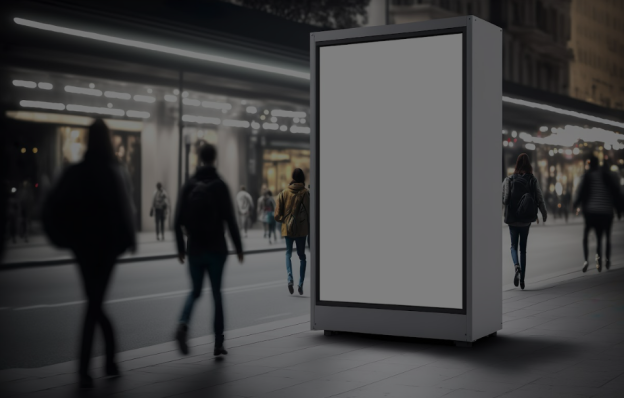In the vast realm of digital marketing, precision and strategy are more vital than ever. With a staggering 4.9 billion people using the internet globally, businesses have a plethora of opportunities to make their mark. Still, with opportunity comes challenge. One of the pivotal challenges in the digital age is ensuring advertisements don’t just reach their audience but do so without overwhelming them.
Enter frequency capping. This tool, which limits the number of times a specific advertisement is shown to a particular user within a defined time period, has become a cornerstone for optimizing ad campaigns. Frequency capping serves as a bridge between brand awareness and user experience, ensuring that ads make an impact while preserving the digital ecosystem’s equilibrium.
The Science Behind Frequency Capping
When we delve into the definition of frequency capping in advertising, we’re essentially looking at a strategy to enhance the effectiveness of digital advertising. The goal is to balance user awareness of a product without overwhelming them with ads. Ad efficiency is about effectively resonating with your audience, not just reaching them.
You might wonder why frequency capping is important. First, there’s the issue of ad fatigue. Overexposing users to the same ad can lead to disinterest or even annoyance. Just as repetition helps memory, over-repetition can lead to disinterest. Moreover, from a user experience standpoint, seeing a variety of ads rather than the same one repeatedly can enhance browsing or viewing pleasure. Lastly, for businesses, ensuring ads are not overserved helps with cost efficiency.
Benefits of Frequency Capping
The digital landscape is cluttered, making it imperative for ads to be effective. By reducing ad fatigue, you not only preserve the user experience but also ensure that audiences don’t grow weary of, or even averse to, your brand. An ad seen once can spark interest; one seen twice might reinforce the message; but if seen ten times in quick succession, it risks becoming background noise.
Additionally, the intelligent use of frequency capping optimizes advertising budgets. By setting limits, marketers avoid unnecessary impressions, ensuring that ads get the right amount of exposure within the target demographic without wasting money.
But beyond budgeting and user experience, there’s also brand perception at stake. Being continually bombarded by the same ad can shift a user’s perception from positive brand recall to brand annoyance. A well-implemented frequency cap ensures brand messages are memorable without becoming overbearing.
How to Determine Optimal Frequency Caps
Before implementing frequency capping, you must understand your audience intimately. Different audience segments might have varied tolerance levels for repetition. For instance, younger audiences on fast-paced platforms like TikTok might have a lower threshold than older audiences on a platform like Facebook.
The ad creative also plays a crucial role. Some ads are designed to be fun and can be viewed multiple times without causing fatigue, while others might be more informational and best seen fewer times. By regularly refreshing creatives, marketers can reset audience engagement, making frequency capping a dynamic process.
One of the best strategies to nail down the perfect frequency is A/B testing. Experiment with different caps, analyze user interactions, and refine your approach based on the data. Modern analytics tools can offer invaluable insights in this realm.
Implementing Frequency Capping Across Various Platforms
The realm of digital advertising is vast. Platforms like Google Ads, Facebook Ads, and various programmatic platforms come with their own sets of rules and nuances for frequency capping.
Each platform will have its own interface and mechanism to set a frequency cap. While the principle remains consistent, the application might vary. For instance, Facebook allows advertisers to set ad frequency at the ad set level, whereas Google Ads provides controls at both the campaign and ad group levels.
If you’re running a multi-channel campaign, strive for consistency. A user might interact with multiple platforms in a single day, and ensuring a cohesive experience across channels is paramount.
Pitfalls to Avoid
While frequency capping is a powerful tool, like any tool, it can be misused. Setting the cap too low risks underexposing your audience and missing out on potential conversions. However, the opposite problem—not monitoring your cap regularly—can lead to stagnation and wasted opportunities.
It’s also crucial not to view frequency capping as a one-size-fits-all solution. It should be one component in a larger toolkit of targeting and optimization techniques. Over-relying on it can lead to missed opportunities or even misguided strategies.
Final Thoughts
In the vast world of digital marketing, frequency capping emerges as a subtle yet potent tool. Its utility in ensuring ad efficiency, optimizing budgets, and protecting brand reputation cannot be overlooked. As with all strategies, it requires monitoring, refinement, and adaptation. But with careful implementation, marketers can strike the perfect balance between brand visibility and user experience, driving optimal ROI for their campaigns.
If you need office space, visit OfficeFinder. We can assist you to find the perfect space for your business. Message us, our service is FREE!

